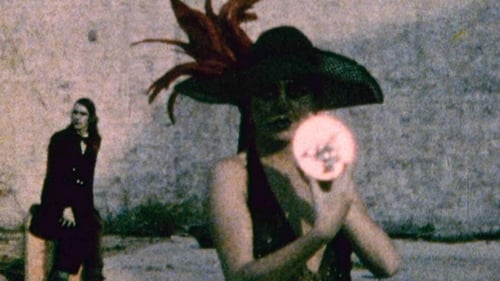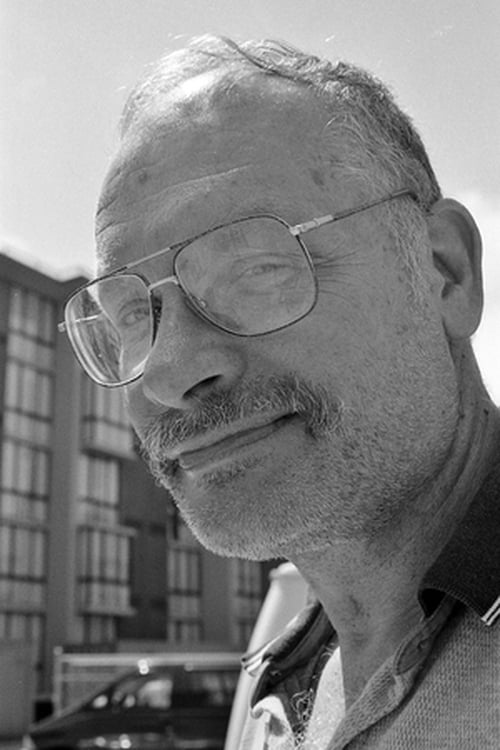Eclipse of the Sun Virgin (1967)
Жанр :
Время выполнения : 17М
Директор : George Kuchar
Краткое содержание
Eclipse of the Sun Virgin is a 16mm, film; directed by George Kuchar. The film is based on dealing with a poignant self-identity and the feeling of void between pornography.

This film was shot on Super-8 by Derek Jarman in 1977 and is considered to be the inspiration for Jubilee. Jarman often showed his films silent or with different musical accompaniment - one of Jarman's suggestions was Brahms' "Violin Concerto."

In this film without sound, a man awakes disheveled in a rooming house. He stares out the window seeing children playing and a well-dressed man sitting on a chair in the middle of the street reading a newspaper and looking up at him. A headline describes the murder of a child. The disheveled man, whose face expresses fear and despair, leaves, going through the city, alarmed when anyone looks at him. A woman invites him to look through a public telescope. He does then keeps going. He climbs a hill. Two fencers appear; so does a jester. Is flight fruitless?

Парень просыпается на улице, блюет на пожарный гидрант, пьет, снова блюет, видит девушку в белом с черной сумкой, которая дает плоский камень, затем мы видим брутального наркомана, который выпускает кровь из вены с помощью шприца. Возвращаемся к девушке в белом, идущей по заброшенному складу и смотрящей через разбитое стекло/очки, блюющий парень подходит к ней сзади, бьет ее по голове камнем, и из ниоткуда выходит Д. Б. Шейн, целует девушку, и они восхищаются концом света, который символизирует облако-гриб на горизонте.

Against the background of a grisly mystery, four people face a growing sense of panic and uncleanliness. Part documentary, part "cartoon," part B movie, the film asks questions to which there don't seem to be any clear-cut answers.

An English girl and an Indian elephant, born on the same day, share a common destiny...

Симпатичную студентку Алису и ее подружку Кэйти приглашают на вечеринку. Там Алиса напивается, принимает кислоту и занимается лесбийским сексом. Потом Алиса знакомится с группой сидящих на лсд хиппи, становится участницей изнасилований, самоубийств, разных оргий и т. п. Когда Алиса принимает ЛСД, фильм из черно-белого становится цветным.

This film is dominated by an icy blue. In a monumental building a group of scientists submit women to obscure experiments, in which sexuality and cruelty constantly merge into one another. When the film was released, this horrifying game of power and powerlessness was condemned severely by a militant group of feminists. The criticism was undeserved. After all, 'Pentimento' is an art-historical term for a hidden image underneath the actual image giving an indication of how the latter evolved to its current state. The film does not endorse the lopsided power relations in our world but actually challenges them.

The Art of Mirrors is an abstract film made in 1973 by director, Derek Jarman. The film, shot in super 8 features figures moving in the foreground and background of an empty space holding mirrors which occasionally flash in the lens of the camera. The images portrayed in the film are reminiscent of Jarman's Abstract Landscape paintings of the same period. In his diary Jarman wrote of this film, 'this is only something that could only be done on a Super 8 camera, with it's built in meters and effects.' The film's title was reworked in the script for 'Dr Dee The Art Of Mirrors and The Summoning Of Angels' in 1975.

Artificial Light repeats variations on a single filmic utterance twenty times. The same phrase is a series of portrait shots of a group of young New York artists talking, drinking wine, laughing, smoking, informally. The individual portrait-shots follow each other with almost academic smoothness in lap-dissolves ending in two shots of the entire group followed by a dolly shot into a picture of the moon... There is a chasm between the phrase and its formal inflections. That chasm is intellectual as well as formal. Frampton loves an outrageous hypothesis; his films, all of them, take the shape of logical formulae. -- P. Adams Sitney, Film Culture Reader

An experiment in associative spontaneity.

A woman's vagina is sewn shut.

Stolen Apples for Karen Blixen is a three-minute black and white film which begins with a portrait of Karen Blixen taken from a photograph.

Two girls are in a sparsely furnished apartment, scantily clad, and being generally unpleasant to each other.

A doctor and nurse sneak away for a kinky encounter, only to be interrupted by a cop... with a secret of his own.

While working at a photo lab, Frampton found that the waste at both ends of the rolls of processed film—where chemicals worked on the emulsion through clips used to attach the film to the machine—produced images far too interesting to be discarded. For Palindrome, Frampton selected images which he described as “tending towards the biomorphic,” resembling abstract surrealist painting. However, the rigid palindromic structure that Frampton imposes on the images—a motorized sequence based on “twelve variations on each of forty congruent phrases”—deviates from the subjective aesthetic of the expressive, demonstrating Frampton’s interest in the “generative power” of films composed by rules and principles.

An anatomy of violence. Four young men and two young women are on a drive. There's a rivalry between two guys for one of the girls. On a remote road, the car stalls. The driver hitchhikes for help. Led by the intrepid girl, the others walk toward abandoned buildings, perhaps a mining operation. One of the three guys sits and reads. The intrepid one explores the building and sees something that scares her. She screams; the two rivals and the second girl run to find her. Something she says starts a fight between her two suitors. The one reading a book walks away in disgust. After stopping the fight, the two young women follow. How can this end?

Oddballs dancing, leering at camera, guy shaving a nontraditional part of his body and man ripping his own throat out, woman stabbing herself to death.

A soundless film starts in a studio: an artist sits, a nude stands; a page burns, paper cutouts appear, images are distorted. The artist removes his eye; it falls from his hand, seeing images spin as it rolls. A man falls, objects in the studio falls on him, he's not the artist. A woman gets help from a man in a lab coat; he and the man on the floor fight over a shotgun. Outside, in the city, people and cars move backwards. On the street, those from the studio chase a woman who's stolen leeks. In the backward cityscape, they move forward. They run toward a seaside amusement park. The artist follows, his head in a bird cage. He ends up with the woman who went for help; or does he?

Personal photos are interspersed with fragmentary drawings and flashes of colour, observed and/or remembered everyday events - all of which add to a general sense of reminiscence. Sometimes a hand appears (Breer’s own) on top of a photo, reminding us that the photo is but an object in the film, not the film itself.

Short film by Peter Kubelka. Arnulf Rainer contorts his mind and body before the camera.







